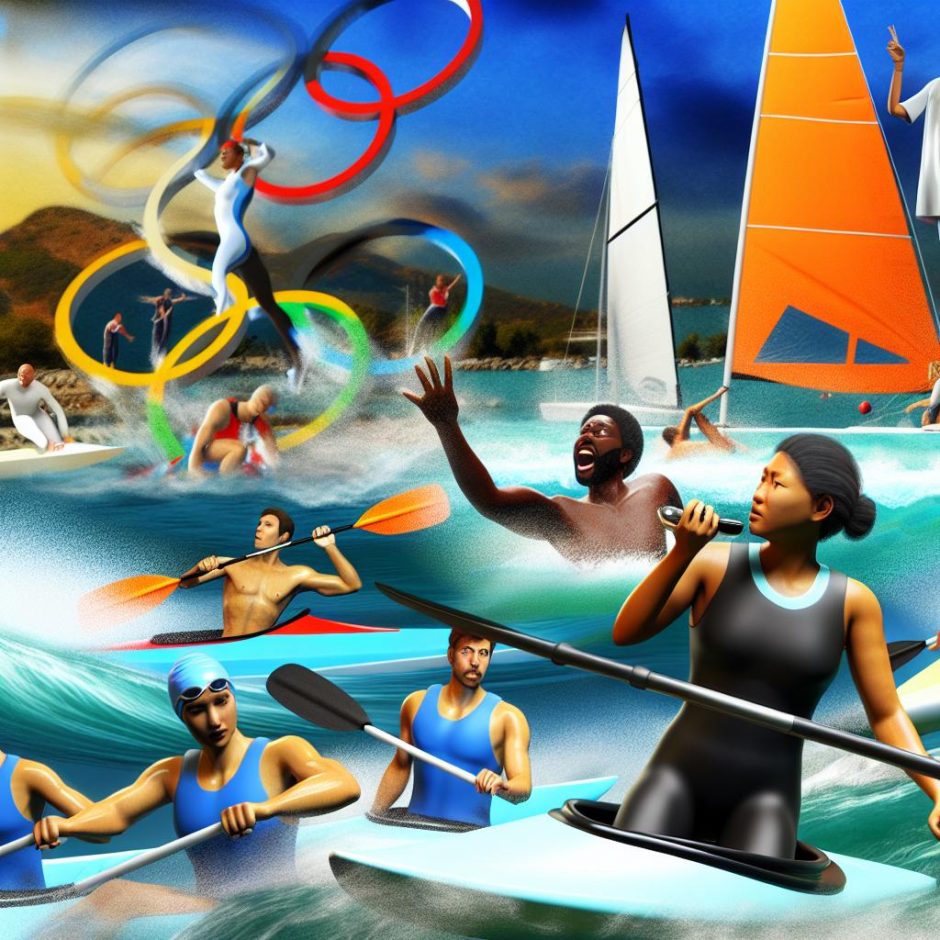Introduction to Water Sports in the Olympics
Water sports have long held a significant position in the modern Olympic Games, offering a unique blend of endurance, strength, and grace. Since their inclusion, these events have captivated audiences worldwide, reflecting both historical traditions and contemporary athletic prowess.
The Evolution of Water Sports at the Olympics
The inception of water sports in the Olympics can be traced back to the early 20th century. The pioneering presence of swimming in the 1896 Athens Games marked the beginning of aquatic competition on this grand stage. Following closely was Water Polo, introduced in 1900, and Sailing, incorporated shortly afterward. As time progressed, the Olympic water sports repertoire expanded considerably, driven by growing global interest and participation. This expansion illustrates the dynamic nature of the Olympics, which continuously adapts to incorporate new sporting disciplines as they emerge in the international sports scene.
Swimming
Swimming events at the Olympics are a highlight of the aquatic competitions, boasting a wide array of distances and styles. Athletes compete in freestyle, backstroke, breaststroke, and butterfly events, both individually and in team relays. This variety underscores the sport’s versatility, challenging competitors to optimize their speed and technique continuously. The introduction of relay races brought an additional layer of teamwork and strategy, further enhancing the competitive allure of swimming. Its immense popularity is reflected in large spectator attendance and global viewership, ensuring swimming remains a cornerstone of the Olympic program.
Diving
Diving made its Olympic entrance in the 1904 St. Louis Games and has since been an essential component of aquatic sports. This discipline requires divers to perform acrobatic aerial maneuvers before entering the water with precision and minimal splash. Competitors are judged on their ability to control their bodies in mid-air, marrying technical skill with aesthetic appeal. Over the years, the sport has evolved, introducing synchronized diving events which see two athletes performing identical moves simultaneously. This innovation adds complexity and depth to competitions, enthralling audiences and elevating the art of diving to new heights.
Water Polo
Water Polo, a staple since the 1900 Olympics, combines the elements of multiple sports, demanding a high degree of endurance, strategic planning, and skilled execution. The sport involves two teams competing to score goals in the opponent’s net, with players demonstrating exceptional swimming ability, tactical awareness, and adept ball-handling skills. Significantly, the inclusion of women’s Water Polo in the 2000 Sydney Games marked a pivotal advancement in promoting gender equality within aquatic disciplines. The sport’s rigorous and thrilling nature continues to engage audiences, contributing to its enduring appeal.
Other Aquatic Events
Moving beyond pool-based sports, a variety of other aquatic events enrich the Olympic program. Sailing, Canoeing, and Rowing all present unique challenges, often contingent on environmental factors such as wind conditions, water currents, and weather patterns. Athletes must skillfully navigate these natural elements, integrating technical proficiency and strategic foresight. These disciplines not only test physical endurance and expertise but also emphasize the intersection of human capability and nature, underscoring the diverse nature of water sports within the Olympic Games.
Technological and Training Advancements
Advancements in technology and training have significantly shaped the evolution and competitive edge of water sports. Improvements in swimsuit design focus on reducing drag and enhancing buoyancy, while innovations in pool construction aim to optimize conditions for peak performance. Furthermore, the integration of data analytics into athletic training facilitates detailed performance assessment, allowing for precise refinement of technique and strategy. Modern training methods often incorporate sports science principles, emphasizing nutrition, recovery, and mental conditioning, all of which are crucial in preparing athletes for the intense demands of Olympic competition.
Global Participation and Influence
Olympic water sports serve as a platform for global participation, welcoming athletes from around the world to compete on an equal footing. This inclusive spirit embodies the essence of the Olympic Games, fostering cross-cultural exchanges and celebrating the diversity of talent and perspectives. The global stage inspires a younger generation of athletes who seek to achieve excellence in aquatic disciplines, motivated by the achievements of their predecessors and the possibility of Olympic glory.
Key Figures
Throughout history, the Olympics have featured standout athletes whose remarkable performances have redefined the boundaries of water sports. Swimmers like Michael Phelps, with a record-breaking medal haul, and divers like Wu Minxia, renowned for her precision and grace, have become icons of the sport. These figures, through their dedication and accomplishments, inspire aspiring athletes globally, serving both as role models and benchmarks of success in their respective disciplines.
Conclusion
Water sports occupy a vital role in the Olympic Games, marrying tradition with modern athletic spectacle. They offer a platform to showcase physical prowess, strategic acumen, and artistic expression. The continued evolution of water sports promises to captivate future audiences, with advancements in technology and training methodologies further enhancing the competitive landscape. As global participation grows and the spirit of inclusivity endures, the Olympic water sports tradition is poised to inspire and engage for many generations to come. For more detailed information on specific water sports within the Olympics, visit the official Olympics website.

